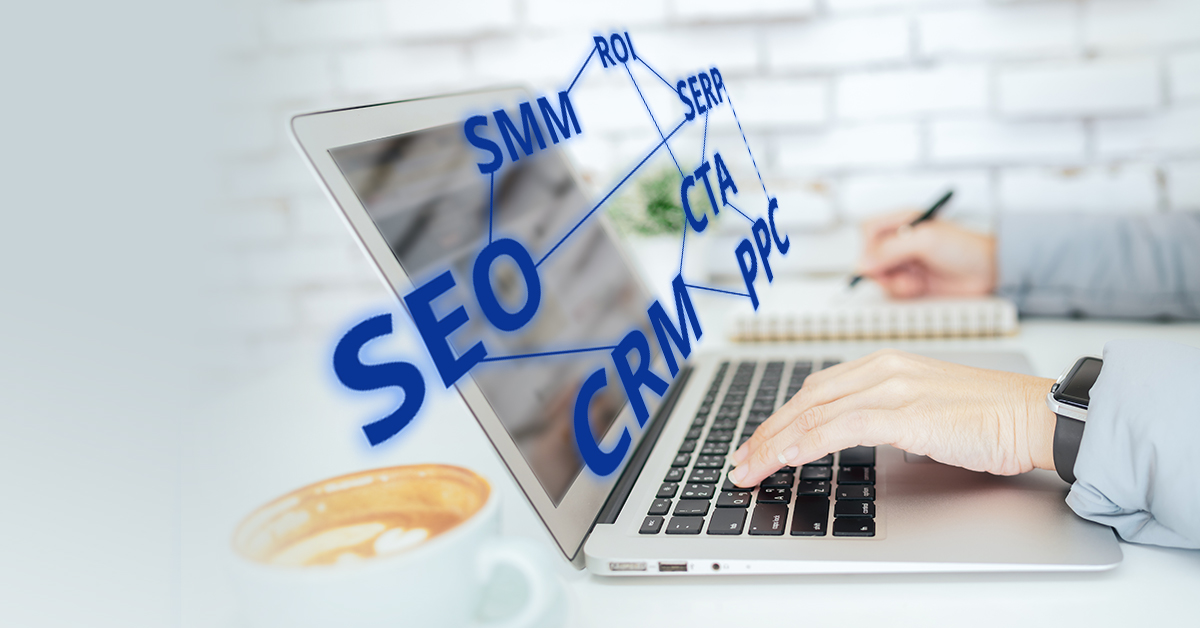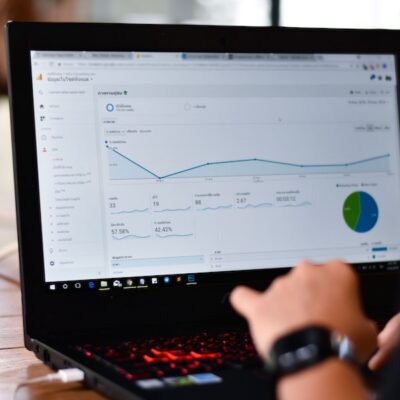As marketing specialists, we know that equipping small businesses for success begins with helping them understand the basics of SEO acronyms and web lingo. SEO acronyms are basically a form of verbal shorthand that everybody uses and understands.
These acronyms are essential to marketing. There are a number of essential terms that your SMBOs should know when they are trying to understand the basics of search engine optimization (SEO) beyond the term “SEO” itself. We’re here to help.
What is SEO?
“SEO,” or search engine optimization, is the process of making your client’s website more visible to search engines (and, thus, more visible to consumers). It’s a way of increasing the overall traffic to their site. It’s a simple definition of what can be a very complex process! Keeping an in-tact SEO strategy starts here.
While there are literally dozens of important terms to learn, every small business owner should know these. It’s your job to ensure they understand and absorb them.
The 20 Most Important SEO Acronyms
- ALT – The alternative text attribute tag, or ALT tag, is a short text description of an image. It usually appears whenever a cursor hovers over an image and helps search engine crawlers understand what an image holds.
- CTA – This stands for “call to action,” and it’s a direct appeal to the consumer that’s designed to get an immediate response. Examples are links that say, “Click here,” or “Read this.”
- CX – This is the “customer experience” or every interaction your client’s customers have with their brand. A positive CX will keep customers loyal. A negative CX will send them away!
- LSEO – “Local search engine optimization,” or local SEO, is the process of increasing a website’s visibility in geographically-related searches. This is something that’s increasingly important due to the use of mobile technology.
- NAP – This stands for the name, address, and phone number of their business — something that needs to be consistent and highly visible all over their web pages if they want to achieve good SEO.
- PPC – Pay-per-click is a kind of advertising where a business pays a fee each time one of their ads is clicked. Marketing often combines PPC and organic methods of reaching consumers to drive more traffic to a site.
- SERP – A “search engine results page” is what you see after you run a query through Google or another search engine. Ranking higher on the SERPs for a given set of keywords is often a goal of SEO.
- URL – This is the unique address of any given page on the world wide web. An effective URL is succinct and tells readers (and search engines) what a page is all about.
Business & Marketing SEO Acronyms
- B2B – “Business to business” marketing is the kind that goes on directly from one company to another, not consumers.
- B2C – “Business to consumer” marketing is aimed at the general consumer and is what many people think of as “traditional” marketing.
- SMB – This is a small or medium-sized business. Usually, any business with fewer than 100 employees is considered “small.” Those with less than 1,000 employees are considered “mid-sized.”
- SMM – Social media marketing is a way of using social sites like Facebook, Instagram and Twitter to network, increase brand awareness, and promote a business.
Software and Services SEO Acronyms
- CRM – “Customer relationship management” software are programs that help businesses analyze and manage customer interactions from the time a lead is developed all the way through sales and afterward.
- CMS – A “content management system” is a platform that lets your clients publish content, edit, and manage a website. WordPress is probably the most popular CMS for small businesses today.
Conversions and Results
- BR – Your client’s “bounce rate” refers to the number of people who land on their website and quickly leave for another site. A high BR is a signal that something about the site isn’t appealing to potential customers.
- CTR – “Click-through rates” are a way of measuring the performance of an email, post, or website. For example, the CTR of an email would be the number of people who actually click that link inside.
- CR – Your client’s “conversion rate” is the percentage of visitors on your client’s website that actually goe through with a prompted action. For example, imagine 100 people visit a website that sells a thingamajig. If 10 of those people buy one, that website has a CR of 10%.
- CRO – “Conversion rate optimization” involves taking a look at a website, landing page, social pages, and calls-to-action in order to raise the number of leads that turn into customers.
- KPI – “Key performance indicators” are used to gauge the success of marketing efforts. KPIs could include click-through rates, bounce rates, sale conversions, and leads.
- ROI – This is the “return on your investment,” or a way of calculating the efficiency of an investment, like an ad campaign. The formula for ROI is [revenue – cost] x 100. It’s a way of determining if an investment is worthwhile and can be a key performance indicator.
Learning these terms will make it easier for your clients to develop a solid SEO strategy with your marketing team. You’ll both be speaking the same language!
How SEO Keyword Placement Works
So, what’s next? Implementing SEO as part of your client’s content strategy helps boost their SERPs. It makes all their marketing efforts more effective. When developing the content for their website, keywords play a significant role. They need to pay particular attention to the keywords that are most relevant to their brand — and learn how to place them. This is keyword optimization. It is essential to their online success.
Keyword Placement Rules
- Make sure that the target keyword is in the URL for the page. For example, “http://mywonderfulcompany.com/chocolate-cookies” would be great if they happen to sell chocolate cookies. It’s clean, clear and simple.
- Include the keyword in the title of the page. For example, “The Story of the Wonderful Company’s Famous Chocolate Cookies” could be the title of a page on their website that tells consumers all about how their cookie company started.
- Work keywords into the meta description (which is a short tag that appears under a page link in the SERPs and summaries its content). For example, “Shop for the Wonderful Company’s chocolate cookies and other treats” might be a good meta tag.
- Add the keywords to the ALT text underneath relevant images. In this example, they might have a picture of their cookies in a gift box with the ALT tag labeled “Chocolate cookie party pack.”
- Use keywords in headers when it makes sense, organically. Think about how a consumer might ask a question. Use that as a guide. That’s essentially how search engines identify the right website to show as an answer to a consumer’s question. For example, a header on one of your client’s web pages might read, “Can The Wonderful Company’s Chocolate Cookies Be Reheated?” followed by instructions on how to reheat the cookies before serving for that “fresh-baked” taste. That’s a practical question a consumer might ask — and a useful answer.
If your SMBOs are struggling with an SEO acronym or a set of them as they embark on their SEO journey, don’t despair. Learning effective SEO techniques is a process — and a constantly evolving one. With time and practice, they’ll get there. You can also find help engaging with a white label SEO agency, like Boostability, to help you!










